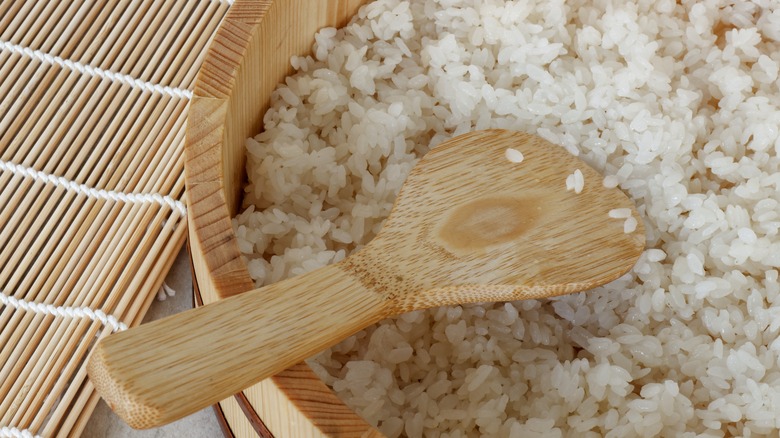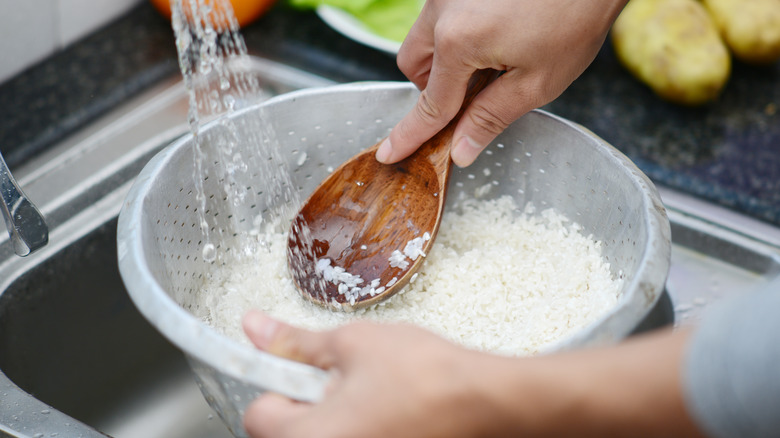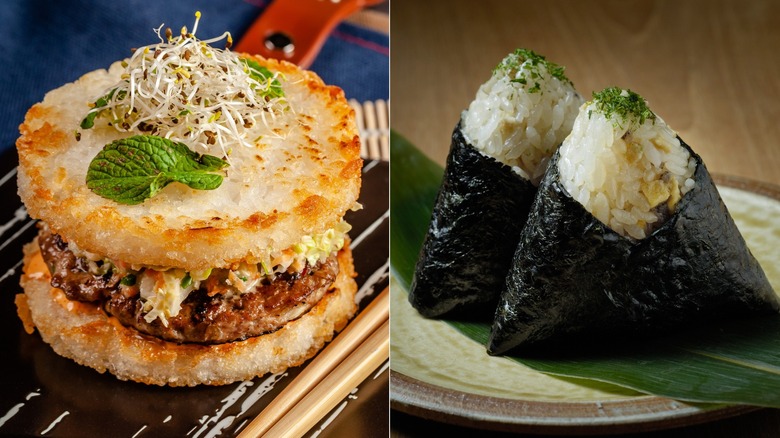What Makes Sushi Rice Sticky?
While once a rare sight in the United States, sushi is ubiquitous these days, found at grocery stores like Costco, gas stations, and even airports. If you've ever eaten this Japanese staple dish at home or in a restaurant, then you know that the kind of rice used to make those nigiri and maki rolls is vitally important. If it's not sufficiently sticky, it could fall apart in your chopsticks.
Rice grains can be categorized into three sizes: short grain, medium grain, and long grain. Sushi rice is a type of short-grain sticky rice, which means the grains are compact and full of starch. This high starch content is what helps it hold together. Once cooked, the rice can be formed into any shape and eaten in several innovative ways. (For instance, besides cylindrical sushi rolls, the rice can also be compressed with fish in a box and divided into straight-edged shapes, called oshizushi.) However, while having plenty of starch gives sushi rice its texture, there's more to the sticky story.
A carbohydrate causes sushi rice to stick
Amylopectin is the starch molecule and culprit that makes sushi rice, and rice in general, sticky and easy to mold. Short-grain rice contains higher amounts of the complex carbohydrate than medium-grain or long-grain rice. This is the reason why sushi rice is better for molding and at holding its shape than basmati rice.
If you're worried that rinsing the sushi rice will remove all of its starch and cause it to not stick together, don't fret – this isn't the case at all. The starch that causes the rice to stick is inside the grains, and can only be activated once cooked. So, you'll want to rinse the grains thoroughly, until the water turns from cloudy to clear. This will help remove excess starch that coats the grains, plus any small insects like weevils. However, if you decide not to wash your rice before cooking it, you might be left with rice that is too sticky and too chewy. It'll probably have a mouthfeel that is similar to eating grain-shaped rice gummies. Pro tip: add a little bit of vinegar in your sushi rice if it's too sticky.
Sushi rice's stickiness makes it ideal for more than just sushi
The amylopectin in sushi rice is used in more innovative dishes than just sushi. Depending on the kind of vinegar you use, you can easily make gluten-free rice buns — just throw a hamburger patty or any other fillings of your choice in the middle and you have a sandwich! If you decide to use malt vinegar (which contains wheat) or non-distilled vinegar, then your rice buns won't be gluten-free.
You could also make onigiri, essentially a stuffed rice ball wrapped in nori seaweed. It has seemingly endless filling possibilities, like tuna and kewpie mayo, tempura fried shrimp, pickled plums, and more. Or, if you're tired of sushi and have leftover rice, then you might want to try using its stickiness to your advantage by frying up some crispy rice. When topped with spicy tuna or served with your favorite dipping sauce, it makes for a seriously fun and crunchy snack. Best of all, because the sushi rice is sticky, you can shape it however you'd like.


